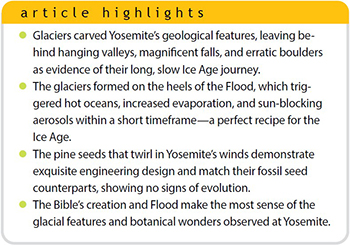 The beauty of Yosemite National Park is breathtaking, but the park holds more wonders than stunning scenery and craggy heights. And the history that’s printed in guidebooks and on trail signs may not match the actual clues the park’s past left behind.
The beauty of Yosemite National Park is breathtaking, but the park holds more wonders than stunning scenery and craggy heights. And the history that’s printed in guidebooks and on trail signs may not match the actual clues the park’s past left behind.
My Yosemite article in the July/August Acts & Facts highlighted two rocky conflicts that refute ancient radioisotope ages—though not radioisotope ratios—from within the grand granites of the park’s impressive Sierra Nevada mountain range.1 It also offered ideas on how and when the Sierras rose and its valleys formed in association with the global Genesis Flood. This part 2 article examines two more features that confirm Genesis history.
Evidence of an Ice Age
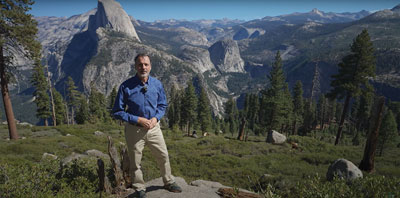
The high elevations at Yosemite show telltale signs that plenty of ice once covered these mountains. Hanging valleys are one such sign. These valleys typically have a U-shaped profile, indicating glacial ice scoured them from the underlying rock as glaciers moved downhill. At higher elevations, the ice carved a valley that empties into an even wider, deeper valley that itself resulted from a larger ice sheet moving downslope. The higher hanging valleys thus end in sharp drop-offs, forming steep cliffs.
Today, all that ice is gone, and the hanging valleys empty their streams into stunning waterfalls. Yosemite has many of these, like Sentinel Falls, Bridalveil Fall, and Yosemite Falls, which is the tallest.2 The plunging water roars loudest as spring sunlight melts the previous winter’s snow. Hanging valleys and their cliffs with dramatic cascading water remind us that thick ice once covered and carved these granites.
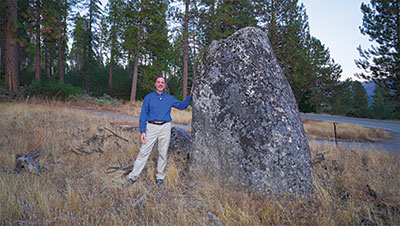
Another Ice Age feature is glacial erratic boulders, which are recognizable because they traveled farther from their source than they could have rolled if they’d fallen from a nearby cliff. They often do not match the rocks they rest upon. Ice plucked these boulders out of hillsides and valleys and moved them downslope. As the ice melted, it dropped its rocky cargo far from the rock’s starting point.
Recipe for an Ice Age
Signs from around the world—including the hanging valleys and erratic boulders seen in the Sierras—reveal that ice covered about 30% of Earth’s landmass during the Ice Age. Today it has melted back to about 10%.3 People who deny the Genesis Flood struggle to model sufficient conditions for an ice age. They just can’t get current natural processes to lift enough water from the oceans to build massive ice sheets or, once frozen on land, keep the ice from melting during summer. But Noah’s Flood set up just the right conditions for both of those feats. The acronym HEAT helps one remember these conditions: Hot oceans, Evaporation, Aerosols, and Tiny time.4
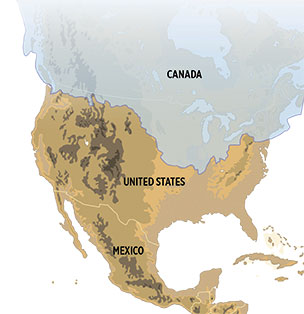
So how did the Flood make the oceans hot? The Bible hints at its start, saying that “all the foundations of the great deep were broken up” (Genesis 7:11). We infer that long tears in Earth’s crust called rifts initiated the Flood. Hot water and lava spewed forth on land and into oceans. Perhaps days or weeks into the Flood some of those rifts began spreading as seafloor began to sink toward Earth’s mantle, far below the crust. This sinking and spreading moved at roughly a brisk walking pace.5 Magma rose to fill the rifts, creating an entirely new and hot seafloor that heated the world’s waters.
Hot oceans worldwide would significantly increase evaporation. The water vapor would then cool, and precipitation would fall upon continents. Severe snowstorms soon built ice sheets in high latitudes and high elevations like those at Yosemite.
The third condition is aerosols, tiny particles emitted from volcanoes that deflect solar radiation back into space. Conventional models insert imagined eons between eruptions—plenty of time for aerosols to fall and sunlight to melt ice during summer, frustrating any chance of an ice age. Instead, a steady stream of volcanic eruptions late in the Flood year and continuing for some seven centuries after the Flood reflected radiation so that the ice stayed put.6 Because tiny time elapsed between eruptions, we can thank Scripture’s chronology for providing the timeline of events that set the stage for Earth’s Ice Age.
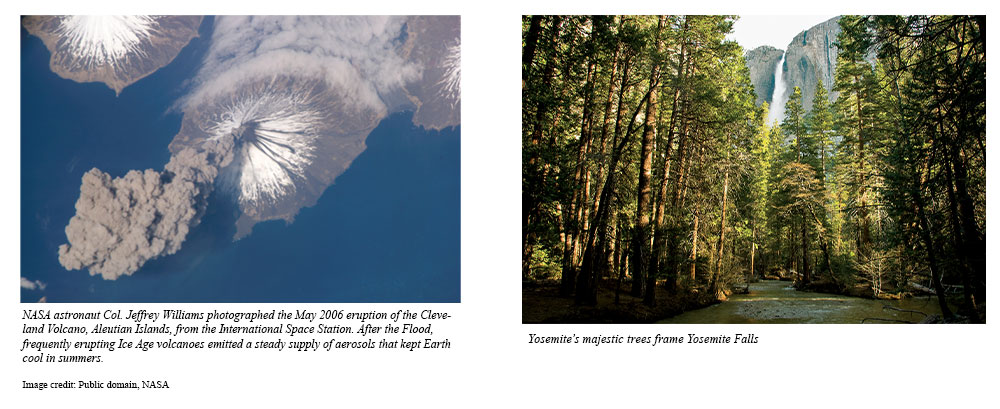
Whirling Wonder: Slowing Down a Falling Seed
Visitors marvel at Yosemite’s grand features like mountaintops and waterfalls, but something as small as a Yosemite pine tree’s seed also evokes praise for its Creator. It’s graceful, rotating descent reflects impressive design.
“The whirling, winged seeds of today’s conifers are an engineering wonder.”7 Believe it or not, the secular UC Berkeley News wrote that in its report on an investigation into winged seeds from fossil conifers. As “engineering wonders,” the seeds surely qualify as examples of our Creator’s “invisible attributes [that] are clearly seen, being understood by the things that are made, even His eternal power and Godhead, so that they are without excuse” (Romans 1:20).
What makes these seeds so special? Yosemite pine seeds grow within a cone and are released when the cone dries and opens its scales. They’re similar to samaras, winged fruits with seeds that helicopter- spin when they fall, but these pines produce just the seed with an attached wing. Both have aeronautical features that slow the seeds’ fall and let them ride the wind like tiny hang gliders.
Other researchers who investigated autorotating seeds wrote,
Despite their tiny wing featuring very low aspect ratios, samaras seem to be masters of autorotation, as they descend at incredibly low vertical speeds of under 1 ms−1 [i.e., 1 meter per second] in still air conditions, which is much slower than many have anticipated.8
The true Engineer knew exactly which falling pace would optimize the seed’s success. Precise shape, weight, material strength, and balance of the single-winged, propeller-like samaras and pine seeds enable them to fall slowly enough for breezes to carry them out from beneath the parent tree to a place where they can sprout and grow in more sunlight.
Whether maple, sycamore, or pine seeds, a high leading-edge vortex (LEV) powers their slow descents. Like a tiny tornado, the LEV suctions these seeds skyward. Researchers have identified three requisites for a high LEV in samaras.8
- The wing must be shaped to generate rotation.
- The wing shape must balance inertial force with the Coriolis force9 lest the LEV become too weak or detach from the wing.10
- The wing must have an aspect ratio (i.e., the wingspan-to-width ratio) that is less than 10.
Only with all these specifications in place together will the seed successfully land far enough from its parent tree.
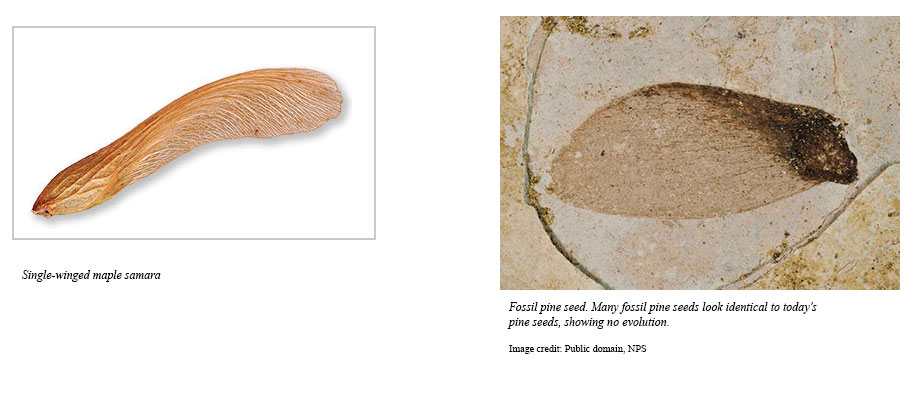
Supernatural Engineering?

Does any tree comprehend leading-edge vortices, Coriolis and inertial forces, or aspect ratios? Could these seeds really have resulted from “about 270 million years of evolution by trees experimenting with the best way to disperse their seeds?”7 Of course not. Today’s single-winged seeds look just like those found as fossils. Since they appear already fully formed from the start, fossil seeds offer no evidence of trees experimenting over vast ages. Someone with foresight designed the seeds just so, optimizing their features for slow descents.11
Sadly, worldly thinking dismisses the supernatural from scientific reasoning, leaving “the creature rather than the Creator” as the illegitimate engineer (Romans 1:25). Despite this attempt to leave Jesus out, science and reason confirm that God created seeds and equipped them to fill the earth (Genesis 1:11).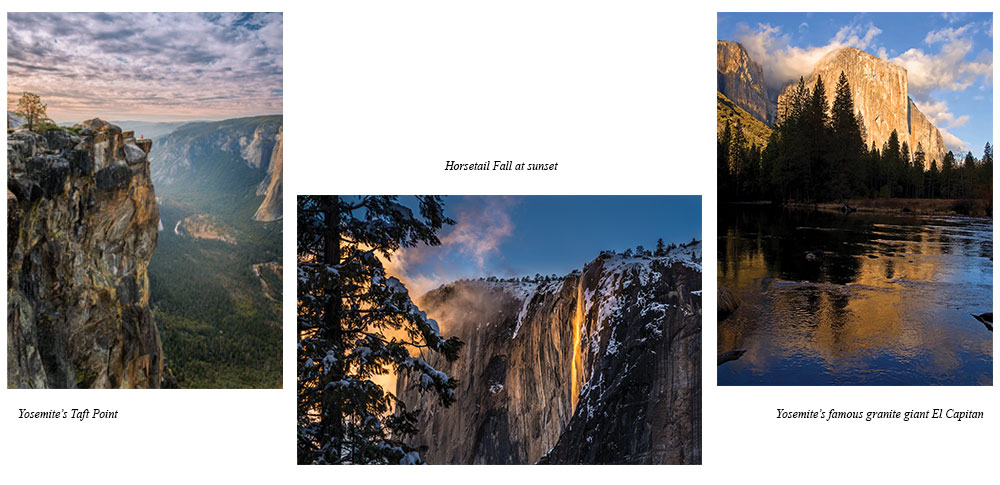
Conclusion
Clues from Yosemite’s stunning landforms point to the effects of the Ice Age, and the Genesis Flood provides a mechanism for that chilly period of Earth’s history. Plus, superb seed engineering confirms the Bible’s creation account. The Bible got these two historical events right—creation and the Flood, for they explain so well what we see today.
References
- Thomas, B. 2025. Yosemite National Park, Part 1: Tiny Clues of a Grand Picture. Acts & Facts. 54 (4): 10–13.
- Waterfalls. National Park Service. Posted on nps.gov, accessed June 11, 2025.
- Bowling, T. Interview with Jake Hebert. How Many Ice Ages Were There? The Creation Podcast, episode 20. April 5, 2022.
- Bruener, T., T. Clarey, and J. Hebert. 2025. Earth Systems: An Introduction to Earth System Origins, Structures, and Processes. Dallas, TX: Institute for Creation Research, 239.
- Baumgardner, J. R. 2003. Catastrophic Plate Tectonics: The Physics Behind the Genesis Flood. In Proceedings of the International Conference on Creationism. 5, article 13: 113–126.
- Hebert, J. 2018. The Bible Best Explains the Ice Age. Acts & Facts. 47 (11): 10-13.
- Sanders, R. Conifers’ Helicoptering Seeds Are Result of Long Evolutionary Experiment. UC Berkeley News. Posted on news.berkeley.edu March 17, 2015, accessed June 6, 2025.
- Jung, B. K. and D. Rezgui. 2023. Sectional Leading Edge Vortex Lift and Drag Coefficients of Autorotating Samaras. MDPI Aerospace. 10 (5): 414.
- This value is expressed as the Rossby number. LEV-generating wings, whether on seeds, insect wings, or fish fins, all have a Rossby number near three.
- In other words, “the compact and attached LEV caused a suction pressure distribution on the leeward surface (top surface) of the seed.” Sohn, M. H. and D. K. Im. 2022. Flight Characteristics and Flow Structure of the Autorotating Maple Seeds. Journal of Visualization. 25 (3): 483–500.
- Curious readers may marvel at a Science online video that shows the LEV on falling maple seeds in smoke-filled wind tunnel experiments. Find “1174196s2.mov” under “Supplementary Material” at www.science.org/ doi/10.1126/science.1174196.
* Dr. Thomas is a research scientist at the Institute for Creation Research and earned his Ph.D. in paleobiochemistry from the University of Liverpool.



